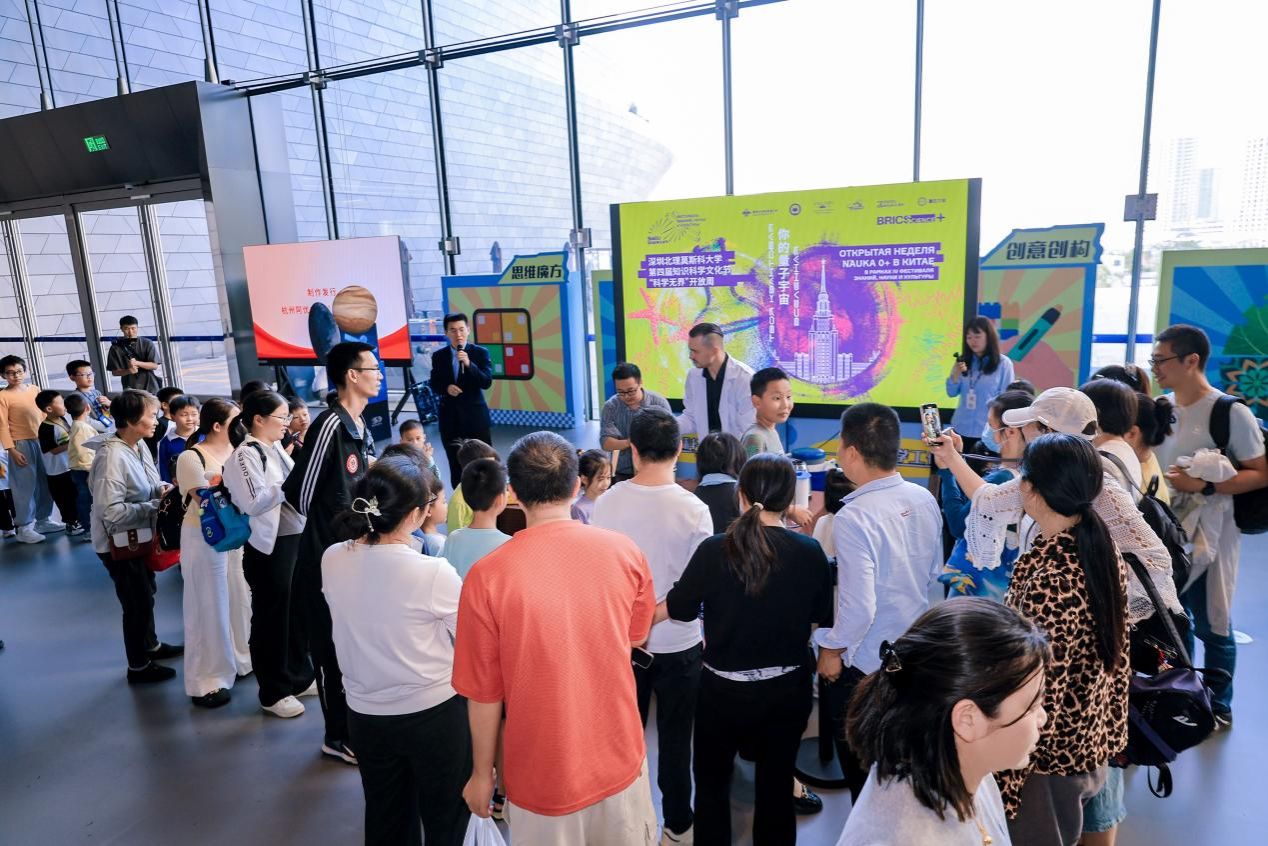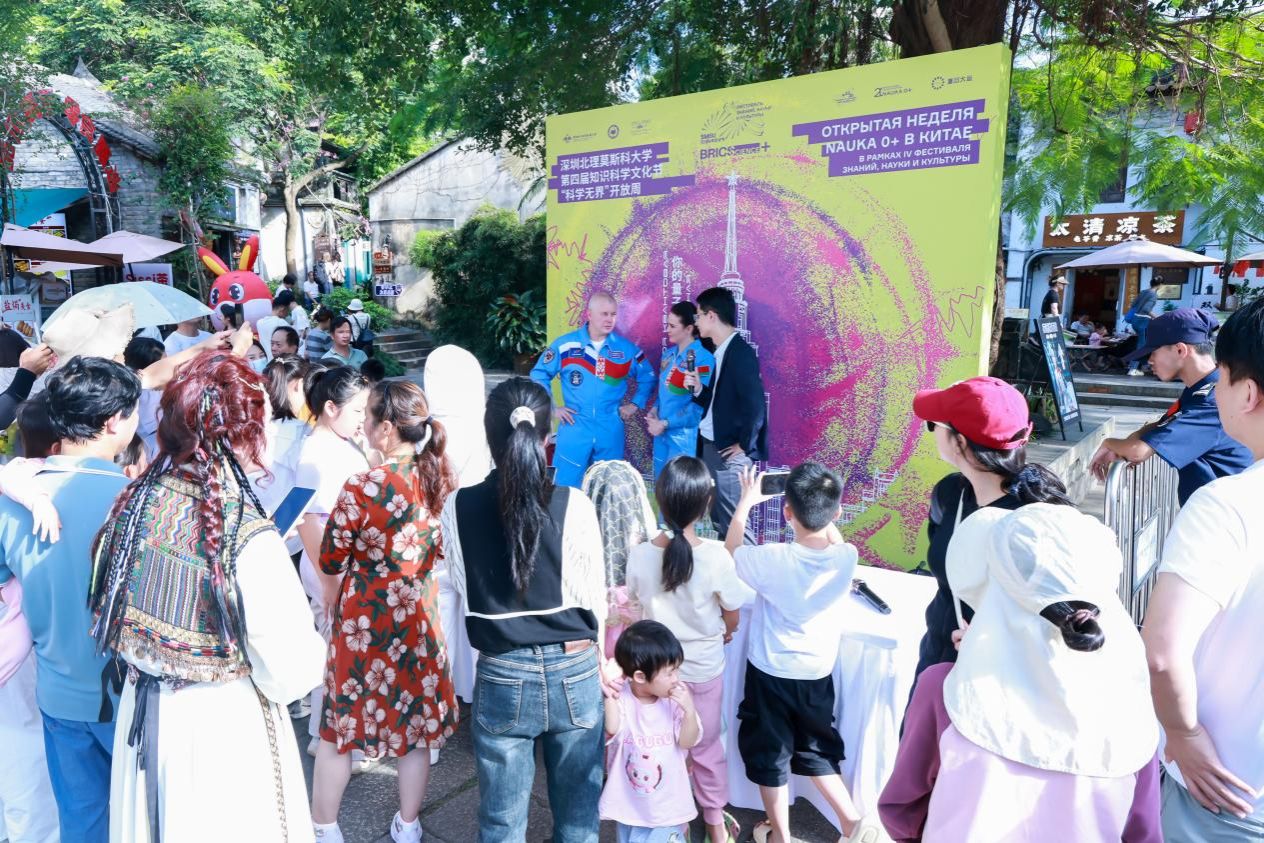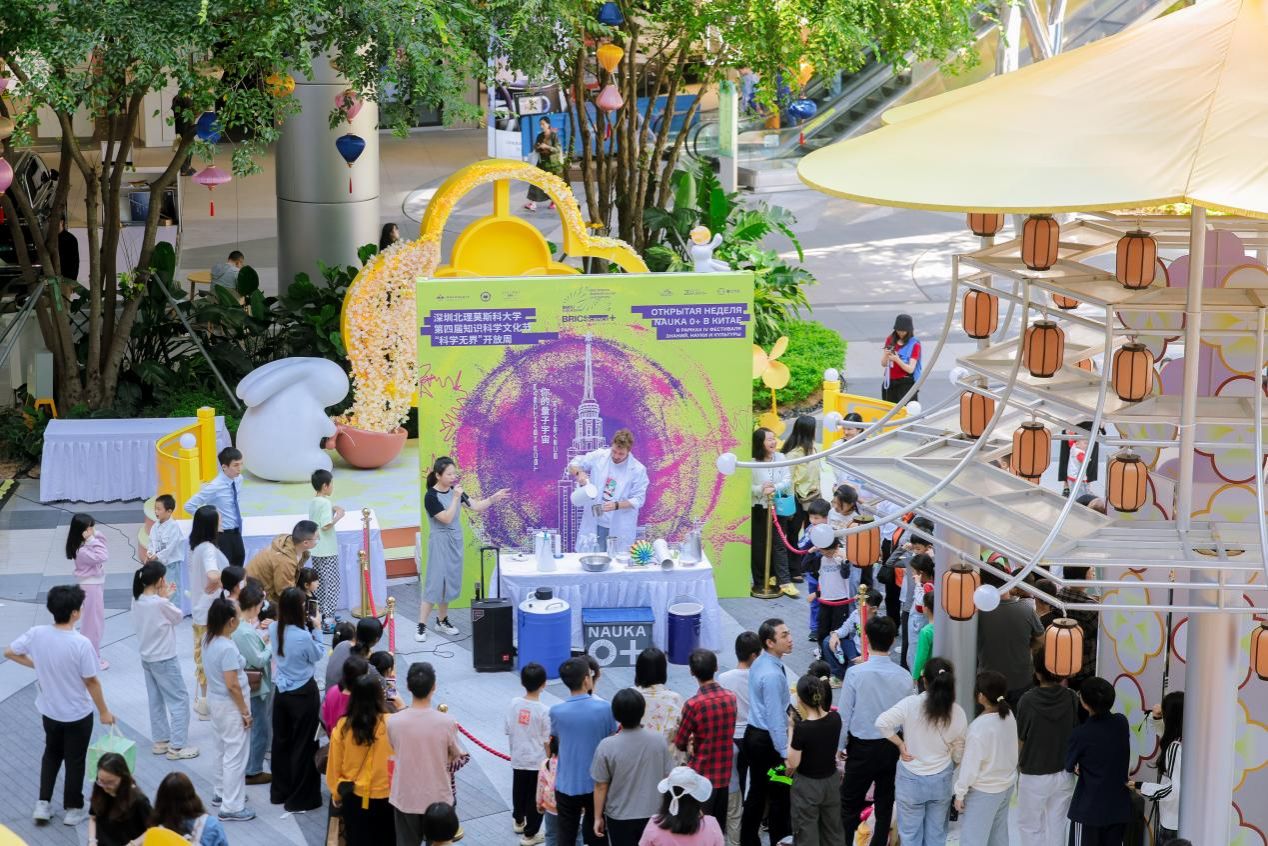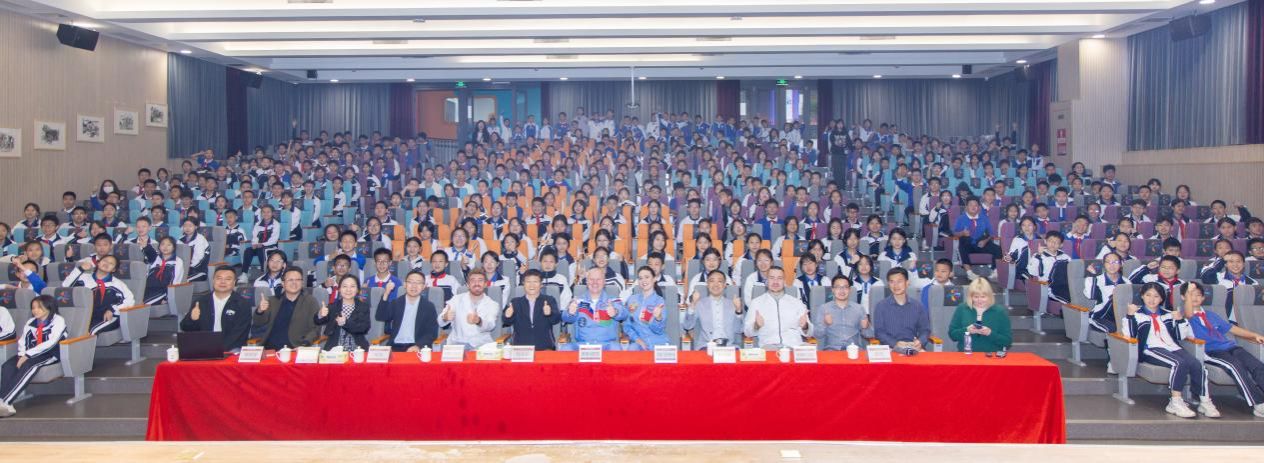On October 26, the Fourth Knowledge Science and Culture Festival at Shenzhen MSU-BIT University concluded successfully.
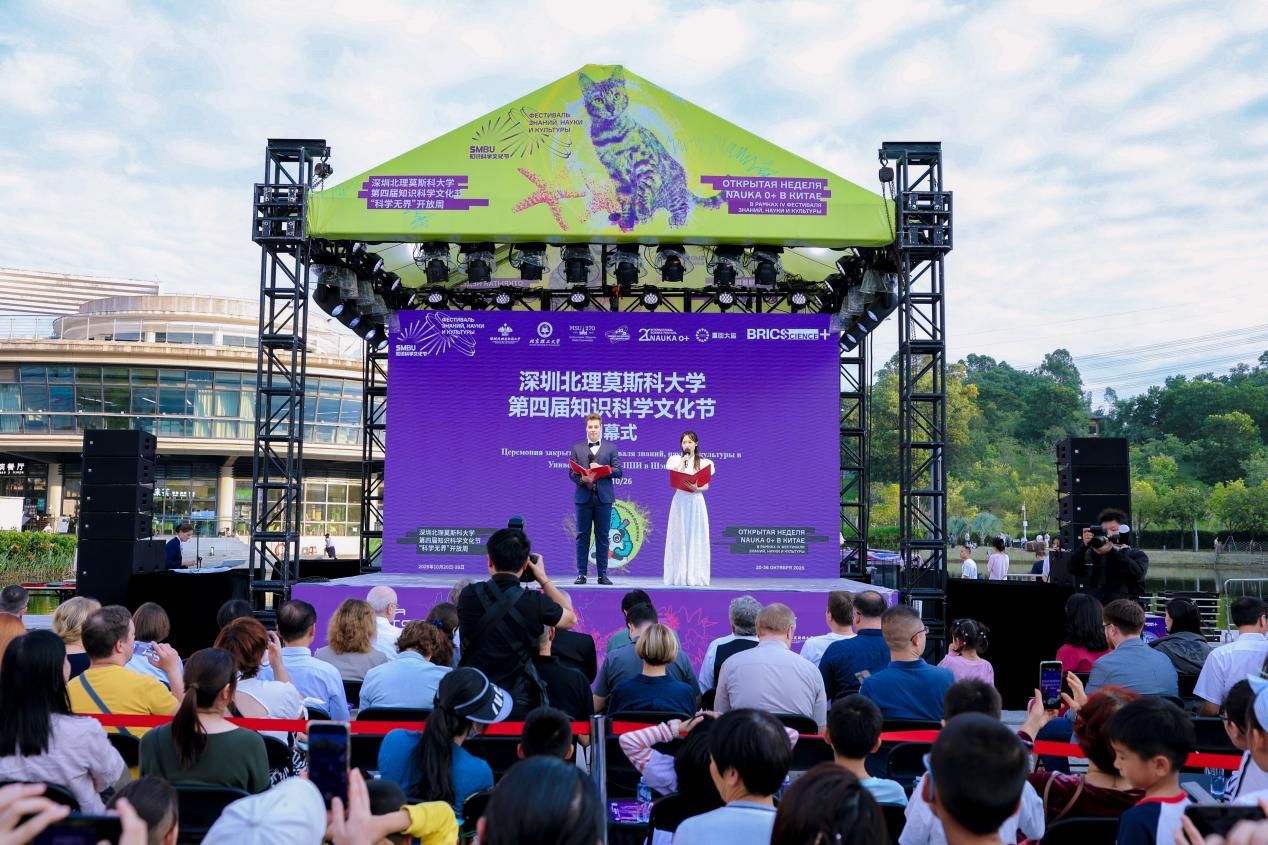
The festival, themed “Your Quantum Universe,” opened on September 13 and ran for over a month. It featured a diverse program including high-level academic seminars, specialized lectures, science-themed artistic performances, and interactive public science activities. The festival invited academicians and renowned scholars from China and Russia, hosting more than 200 events that drew over 200,000 participants both online and offline. The festival not only fostered a rich environment of public science engagement but also injected fresh momentum into deepening China-Russia cooperation in education, science, technology, and cultural exchange.

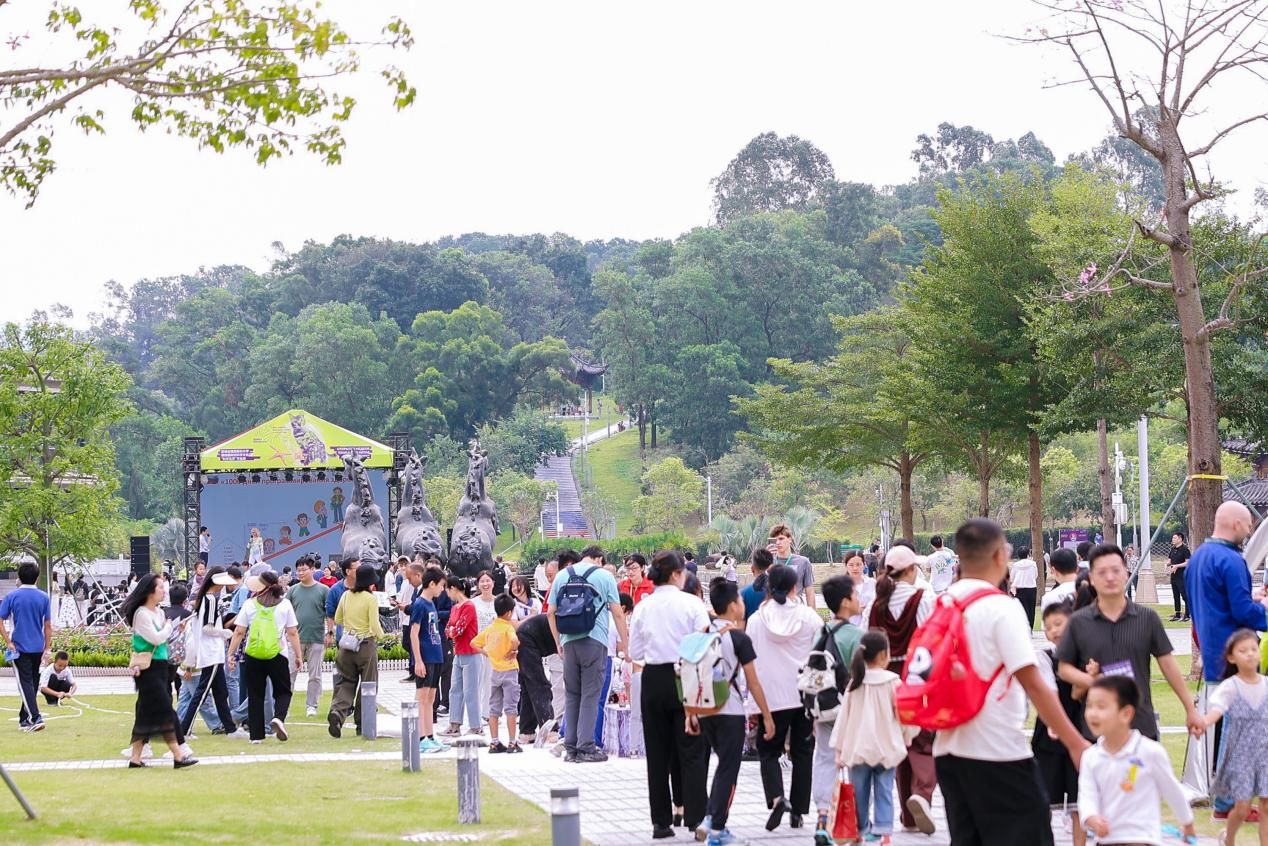
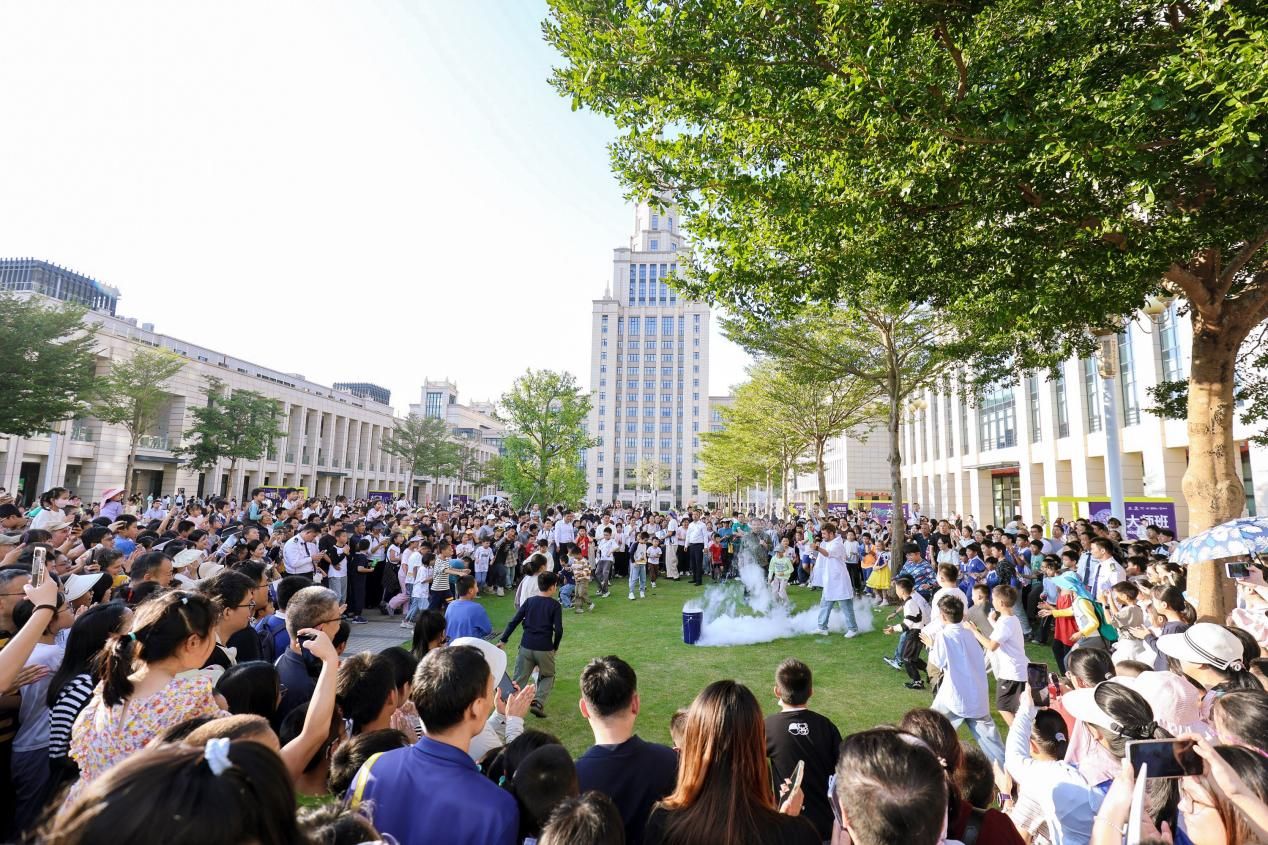
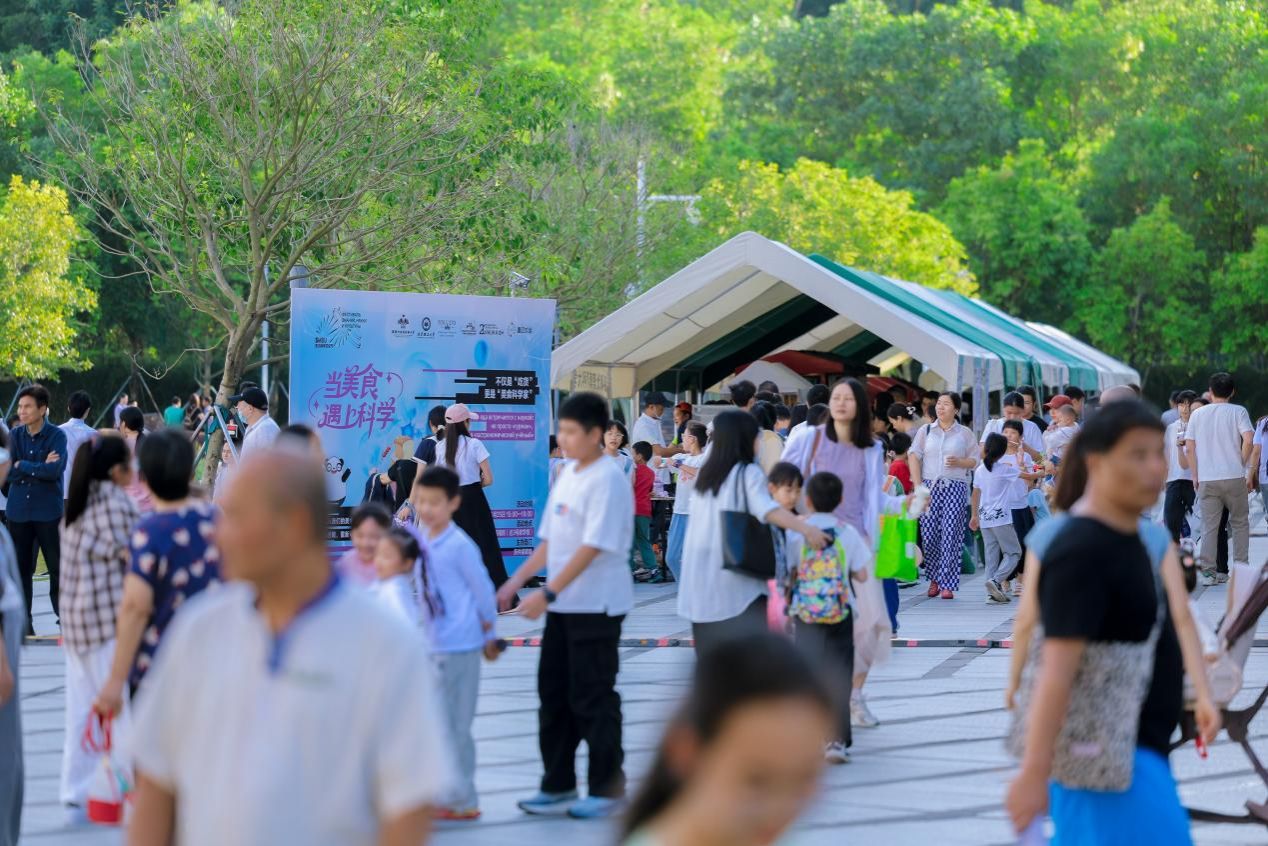
Russian Federation Deputy Prime Minister Dmitry Chernyshenko and Victor Sadovnichy, President of Lomonosov Moscow State University, sent special video greetings to congratulate the festival and expressed their high expectations. The festival also received strong support and assistance from the Guangdong Academicians Association and China Minsheng Bank.
The closing ceremony opened with a highlight video reviewing the festival and a street dance performance titled “Colorful Dance” by students from the Shenzhen MSU-BIT University Affiliated School of Fine Arts.

Attendees included Li Hezhang, President of Shenzhen MSU-BIT University; Sergey Ivanchenco, First Vice President and Chair of the Academic Committee; Chen Chaofeng, Deputy Party Secretary and Secretary of the Discipline Inspection Commission; Leonid Gusyev, Vice President of Lomonosov Moscow State University; chess Grandmaster and specially appointed coach of the Shenzhen Mass Sports Promotion Center Ye Jiangchuan; as well as department heads, faculty, and student representatives.

Ivanchenco, representing the university, warmly welcomed all guests at the closing ceremony and expressed deep respect and sincere gratitude to all staff, volunteers, students, participants, and supporters who contributed to the festival. He reviewed the overall progress of the Fourth Knowledge Science and Culture Festival and highlighted its unique value and far-reaching impact across three dimensions: First, Aligning science themes with national strategy: The theme “Your Quantum Universe” closely aligns with frontier technological cooperation areas emphasized by China and Russia, such as digital economy and artificial intelligence. Second, Activating societal potential through widespread science outreach: The festival extended beyond campus boundaries, delivering science resources to locations including the Shenzhen Science and Technology Museum, Phoenix Experimental School, and Dayun Tiandi, expanding public engagement in science. Third, Building educational innovation through Shenzhen MSU-BIT University practice: Leveraging the festival platform, the university explored joint research, youth engagement, and cultural exchange, creating a valuable “Shenzhen MSU-BIT University model” for the China-Russia Year of Education.

The closing ceremony also featured the Fourth Knowledge Science and Culture Festival Awards, where university leaders, including Li Hezhang, presented certificates to volunteers, interpreters, and departments for five major awards: “Outstanding Volunteer”, “Best Interpreter”, “Best Support Award”, “Outstanding Organization Award”, and “Distinguished Contribution Award.”

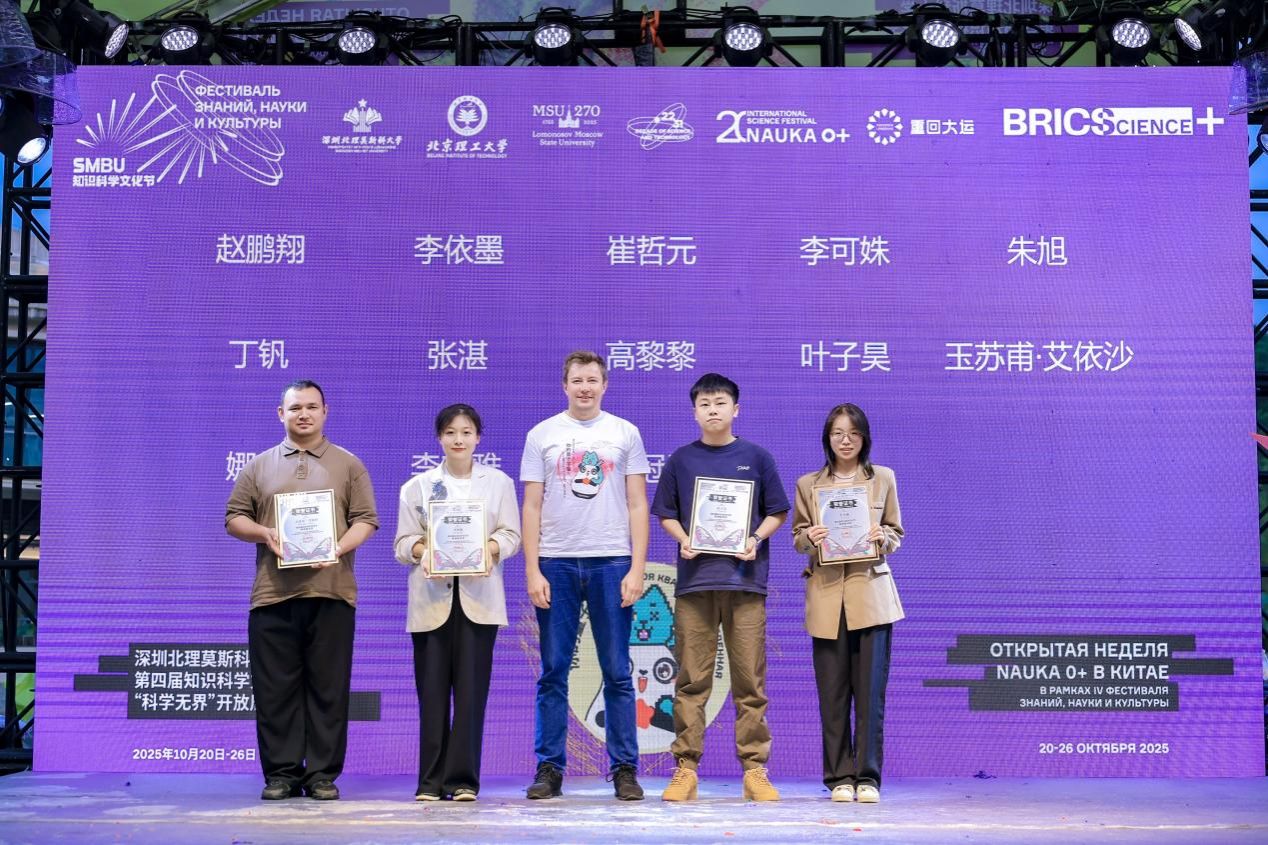

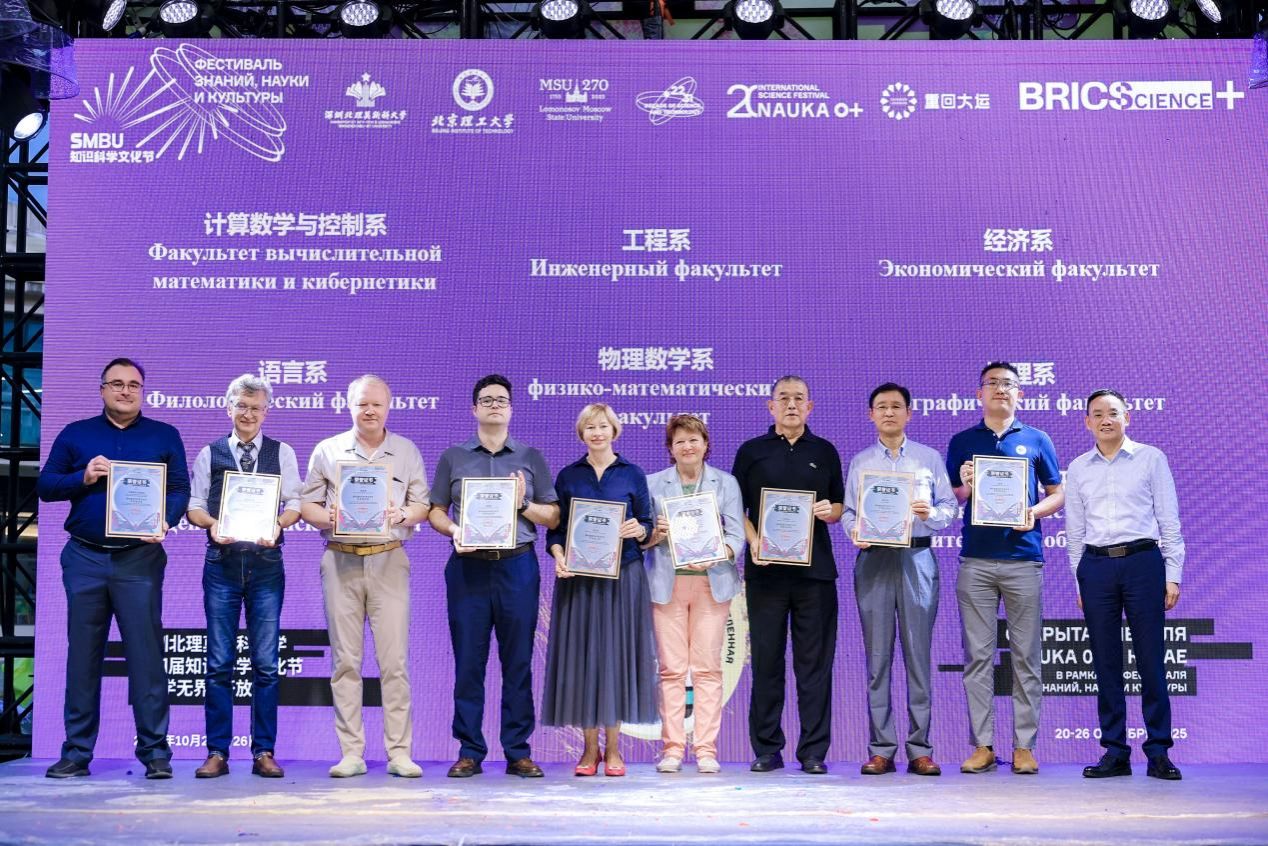

Direct Dialogue Between Chinese and Russian Academicians Decodes Cutting-Edge Science
From quantum technology to space exploration, from life sciences to cultural exchange, high-level lectures led by Chinese and Russian academicians and experts became a “hardcore highlight” of the Knowledge Science and Culture Festival’s Open Week. Experts guided citizens into the “mysterious world” of science using accessible language, with all lectures delivered in both Chinese and Russian, fully reflecting the international character of the event.
On the morning of October 25, Andrey Vitalevich Naumov, Corresponding Member of the Russian Academy of Sciences and Professor of Physics, delivered a lecture titled The Marvelous Reality of Quantum and Photonic Technologies. He began by highlighting quantum technologies in daily life, noting that smartphones, cameras, and other common electronic devices are the fruits of the first quantum revolution and form the core application areas of modern medicine and electronics. Naumov then guided the audience through the development of quantum technologies from the first to the second revolution, explaining in detail the applications of quantum computing in communications, energy, medicine, materials, and biology, along with the underlying scientific principles.

Following this, Pan Gaofeng, Deputy Director of the FAST Operations and Development Center at the National Astronomical Observatories, Chinese Academy of Sciences, and Senior Engineer, presented Listening to the Pulse of the Universe. Focusing on the 500-meter Aperture Spherical Radio Telescope (FAST, the “China Sky Eye”), Pan used images and videos to showcase the project’s origins, construction process, core systems, major scientific achievements, and practical applications. He also shared stories of the research team’s challenges and introduced FAST’s future development plans. At the lecture’s conclusion, he warmly invited young attendees: “Join the team and explore the mysteries of the universe together.”
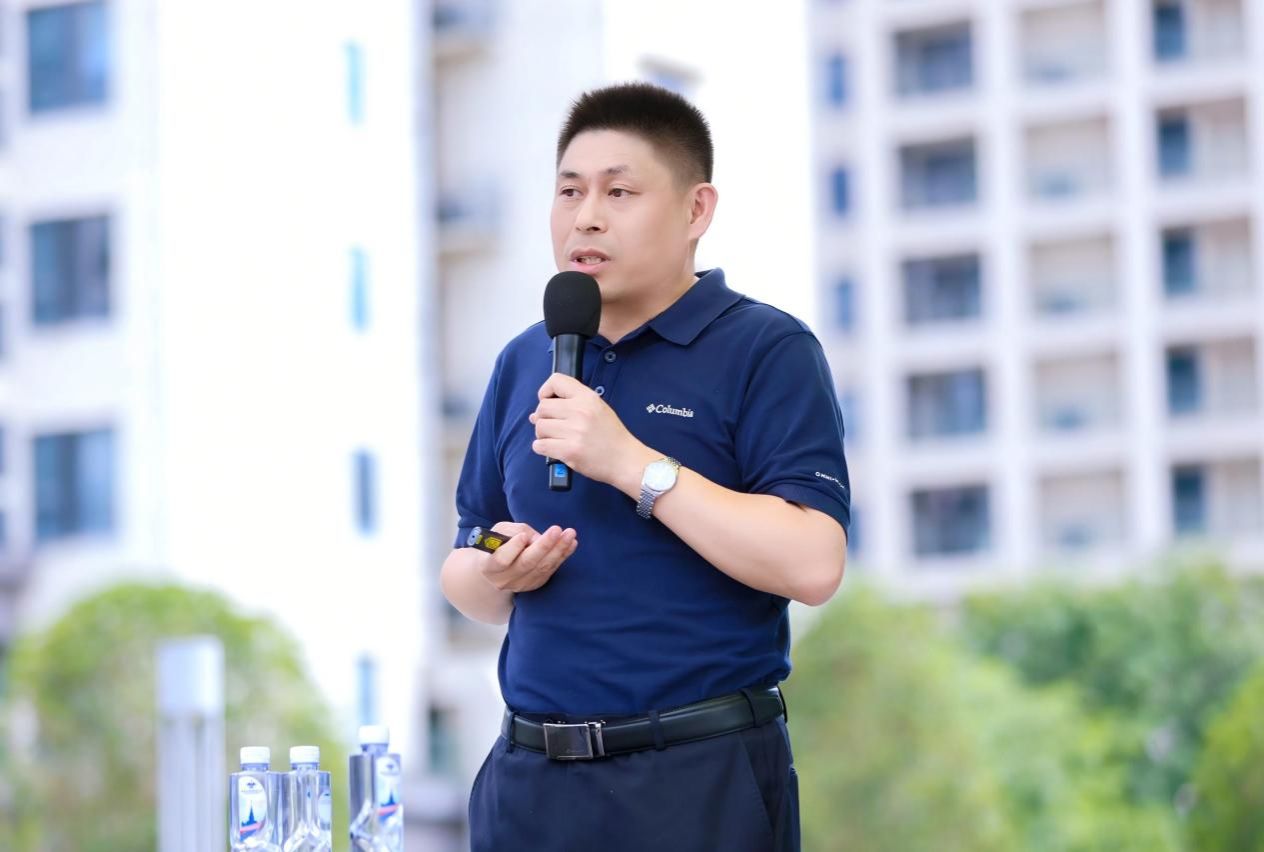
On the afternoon of October 25, the Lakeside Main Stage hosted a special lecture focused on “longevity.” Clinical medicine expert and Corresponding Member of the Russian Academy of Sciences, Kirill Alekseyevich Zikov, decoded the scientific secrets of a long life. His lecture covered the basics of aging and longevity, life expectancy and healthy lifespan comparisons across countries, case studies of long-lived organisms, mechanisms of longevity, and the effects and countermeasures of cellular aging. Addressing the public’s key question, “How can we live longer?”, Zikov offered four practical suggestions: maintain healthy body weight, follow a balanced diet, cultivate good lifestyle habits, and engage in regular physical exercise.
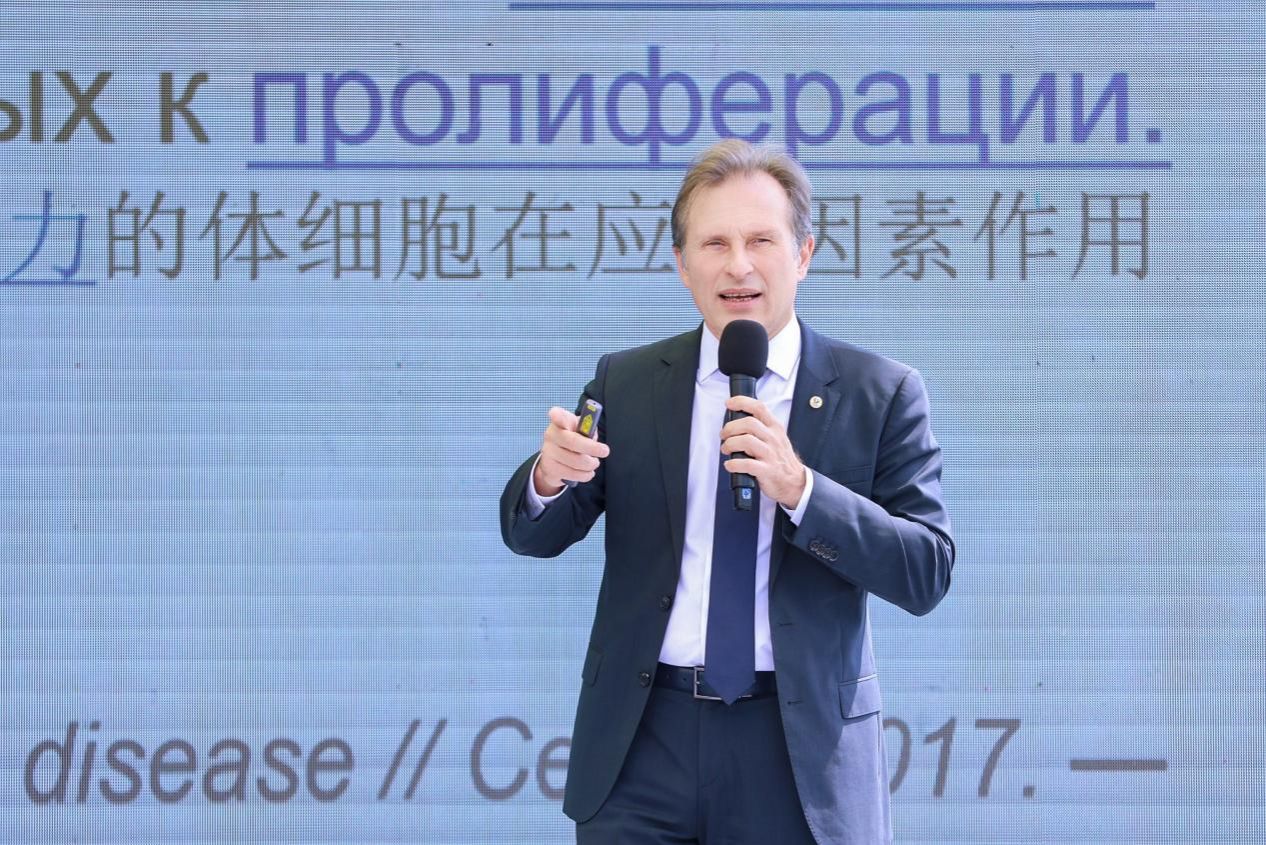
As night fell, astronauts Oleg Novitskiy and Marina Vasilevskaya appeared on the Lakeside Main Stage in their iconic blue spacesuits, greeted by enthusiastic applause and cheers. “What does it feel like to go to space?” “How do you sleep in space?” “How can one become an astronaut, and what are the requirements?” Audience members of all ages eagerly raised their hands to ask questions, repeatedly bringing the atmosphere to a peak. The astronauts’ lively and humorous answers instantly bridged the gap between space science and the public, conveying knowledge in a relaxed and interactive manner. After the session, attendees, filled with anticipation and admiration, patiently lined up to receive autographs from the two astronauts.

“Why do species found in the ocean also exist in mountains?” “What impacts do invasive species bring?” “Should species be actively protected or allowed to follow natural rules?” On the morning of October 26, Professor Alexey Kotov, Corresponding Member of the Russian Academy of Sciences, addressed these ecological questions in a lecture titled Invasive Species: Transforming Nature and Human Life. He explained the causes of biological invasions, presented typical case studies, and outlined their ecological and economic impacts. Regarding the current state of research, Kotov candidly noted: “Research on biological invasions is still limited. We currently understand only some cases with major economic consequences; many instances remain underexplored. This field has become one of the key directions in modern biology.”

In the afternoon of October 26, Academician Fan Dianyuan of the Chinese Academy of Engineering and expert in lasers and optoelectronics delivered a lecture at Shenzhen MSU-BIT University Library titled “Sixty Years of the Laser Power Nation Dream—High-Power Lasers and New Opportunities in Fusion Energy.”
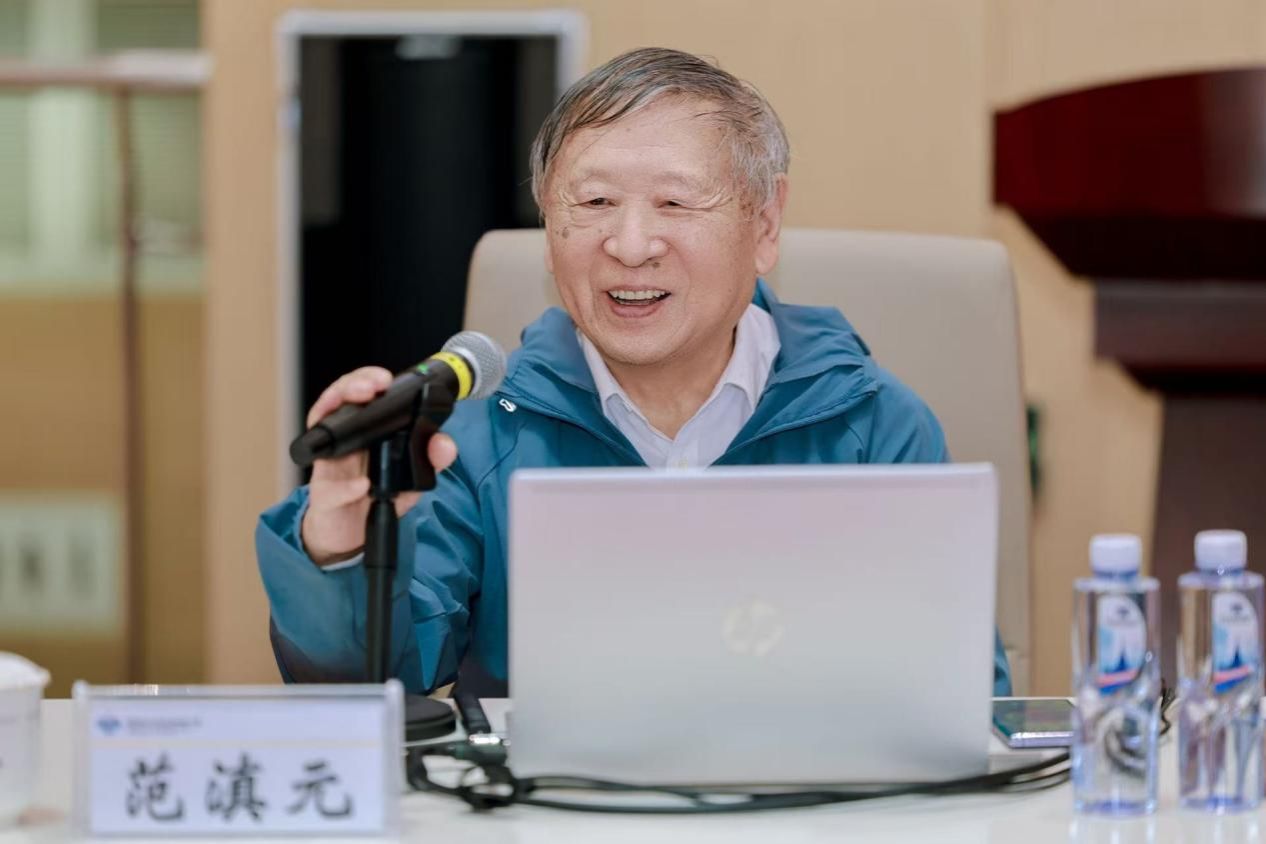
He began by guiding the audience into the world of laser technology with approachable, clear language, systematically explaining the principles of laser generation and their unique properties. He then provided an in-depth analysis of magnetic confinement fusion and laser fusion technologies, outlining research progress and offering forward-looking perspectives on industry development. “After more than half a century of relentless exploration, with continuous breakthroughs in high-power laser technology, laser fusion research has made significant progress. The dawn of ‘fusion ignition’ is emerging. This fusion energy, destined to benefit humanity for generations, is turning from dream into reality.” Fan’s words were imbued with confidence and expectation. He also shared vivid examples, including the “September 3rd Military Parade,” to highlight the latest developments in laser weaponry and the remarkable achievements in laser intelligent manufacturing.
Professor She Nian, Director of the Smart Sponge Research Institute, Tsinghua University Shenzhen Research Institute Innovation Center, and specially-appointed professor at the School of Civil Engineering, Sun Yat-sen University, delivered a lecture titled Resilient Governance of Sponge Cities: Mitigating Extreme Weather through Low-Impact Development. He systematically explained the core goals of sponge city construction and shared numerous successful cases and practical experiences. He emphasized that the essence of sponge cities lies in solving urban flooding problems and improving water quality. The key is adhering to “nature-based solutions”—using decentralized green infrastructures such as rain gardens and vegetated swales to effectively restore pre-development hydrological cycles, enabling cities to absorb and infiltrate rainwater as efficiently as natural forests.
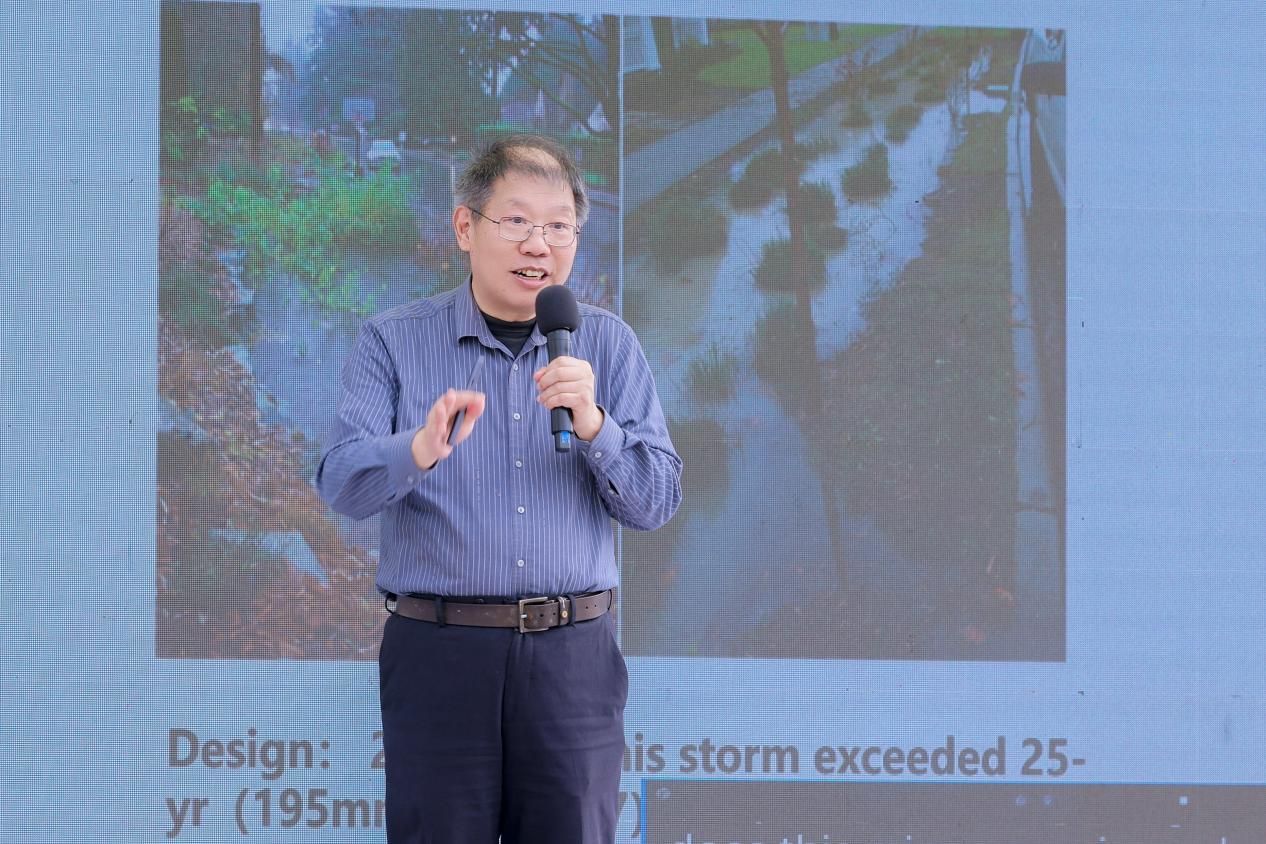
“Immersive” Experiments + Hands-On Interaction Unlock the Charm of Science
During the Open Week of the Knowledge Science Cultural Festival, interactive experience zones across campus were packed with visitors. Previously “highbrow” scientific knowledge shed its mysterious aura here, transforming into engaging, playful activities. Through hands-on operations and personal participation, the public experienced the excitement and charm of science amid laughter and cheer.
The Science Show stage was a magnet for spectators. At the countdown—“Three, two, one… boom!” —the instructor poured hot water into liquid nitrogen, instantly producing a massive white cloud of vapor, igniting the audience’s scientific curiosity.
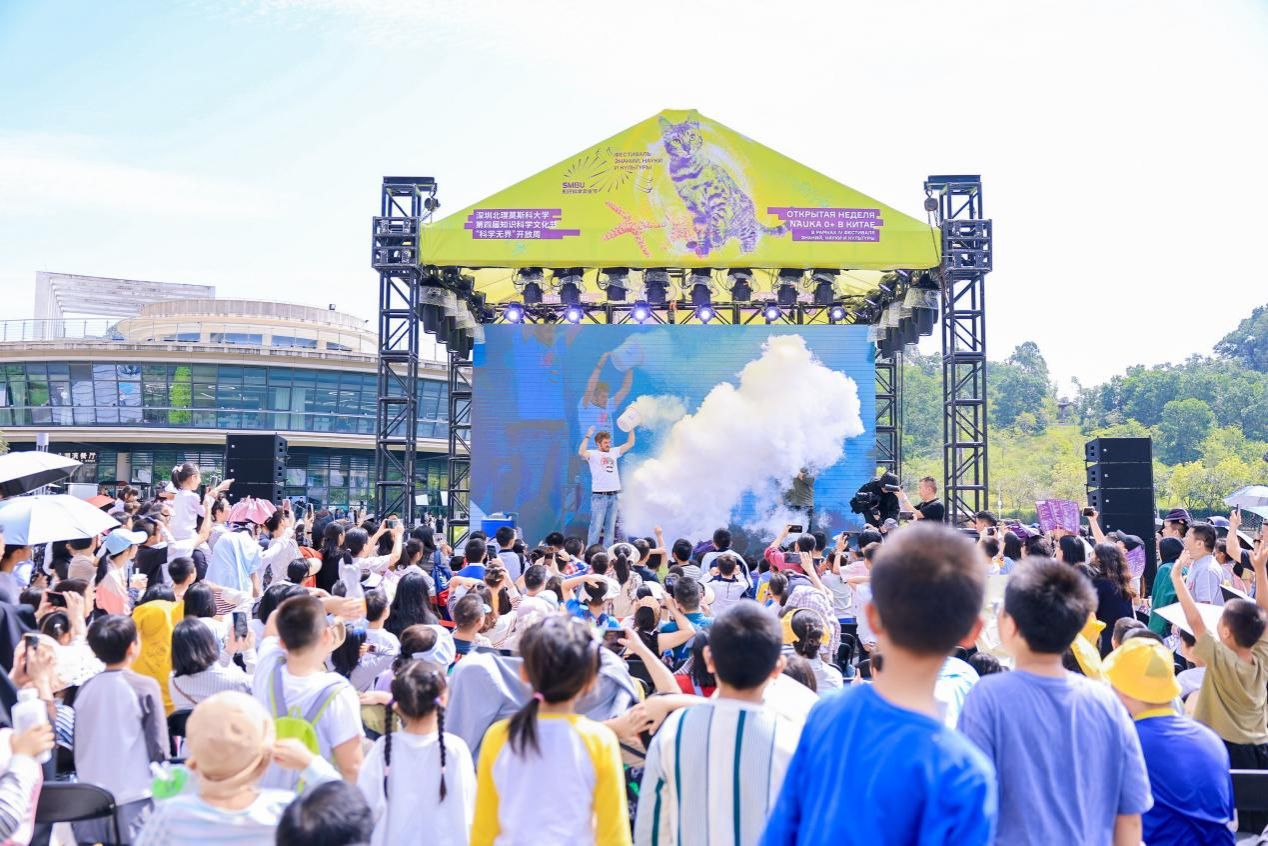
At the Interactive Zone in the Central Plaza, a container filled with thick, pale pink liquid drew crowds, packed three layers deep. “What’s this? It feels so soft! Wait, why is it hard again?” Under the guidance of volunteers, adults and children eagerly reached out to explore. “This is a non-Newtonian fluid,” patiently explained a volunteer. “Its property is simple: the harder you touch it, the firmer it becomes.”
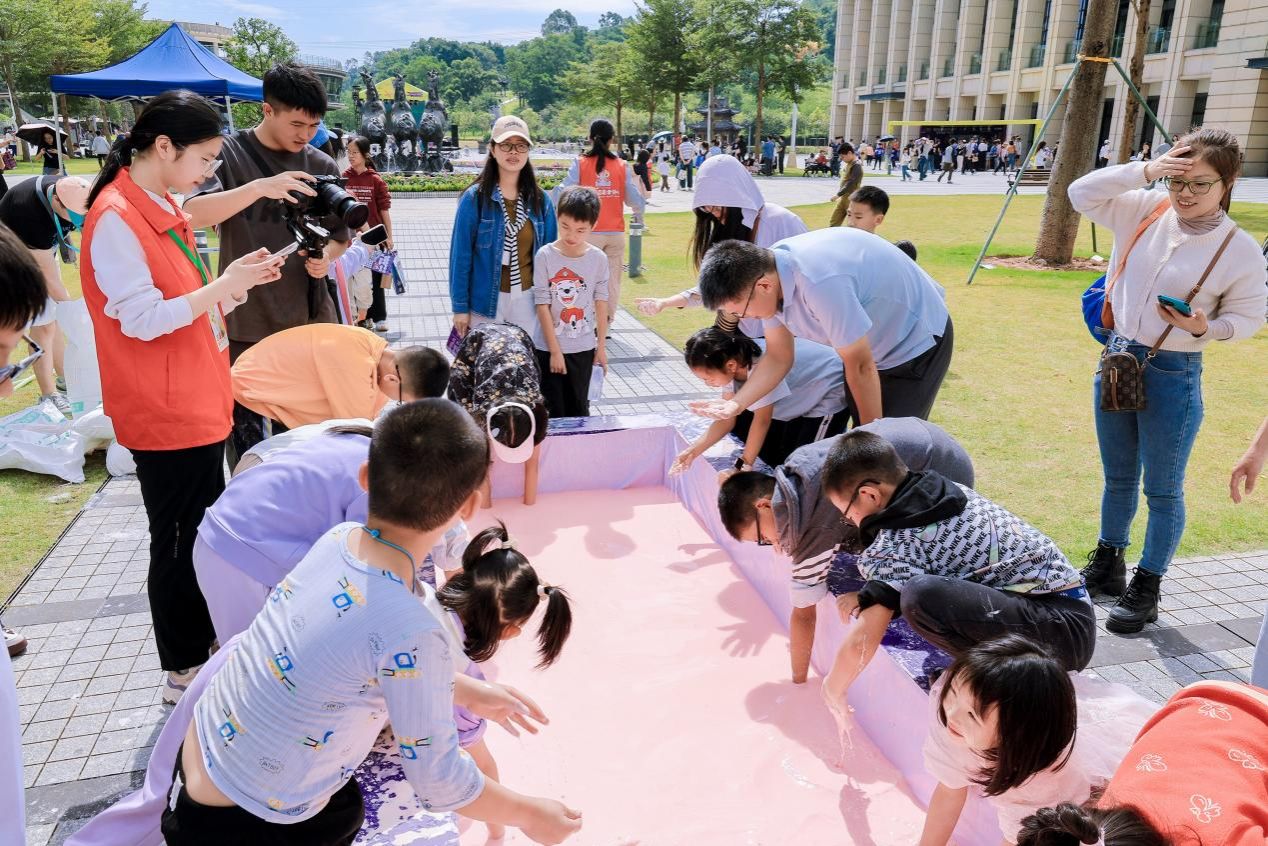
At the “Chemistry Kitchen” station, staff extracted fresh cabbage juice to use as a natural pH indicator. Visitors could add common household substances like baking soda and citric acid to the juice and witness a “magical color” transformation—from pale pink to bright green, then deep purple—intuitively experiencing the wonders of chemical reactions. At the “Robotics” Masterclass, a lively robotic dog captured the audience’s attention, interacting with children with handshakes and playful gestures. Its agile movements and anthropomorphic behavior showcased the vitality of intelligent technology, eliciting joyful laughter and playful chasing from the kids.
Other interactive experiences included “Bioluminescence” with glowing water tanks, “DNA Extraction” using fruit pulp, and “When Food Meets Science” where participants made ice-cream with liquid nitrogen without icy shards—each activity drawing enthusiastic remarks of “so interesting!” Many parents expressed delight: “These hands-on, mind-on science activities are amazing—more captivating than an amusement park! The kids didn’t want to leave and came home talking nonstop about the experiments they did today.”
Science Resources Step Beyond Campus: “Science Without Boundaries” Ignites Public Enthusiasm
As the scale and influence of the festival continue to grow year by year, Shenzhen MSU-BIT University has actively promoted initiatives to take activities “beyond campus”, seamlessly connecting the university’s scientific education resources with everyday life, vividly embodying the promise of “Science Without Boundaries.”
In 2024, the university successfully held outreach exhibitions at Children’s Park in Longgang District and Dayun Tiandi. This year, the scope was further expanded, bringing science resources to more venues including the university campus, Shenzhen Science and Technology Museum, commercial plazas, and Gankeng Ancient Town Cannon Tower Square, allowing more citizens to access high-quality science resources right at their doorstep and truly enjoy a “science feast for all.”
